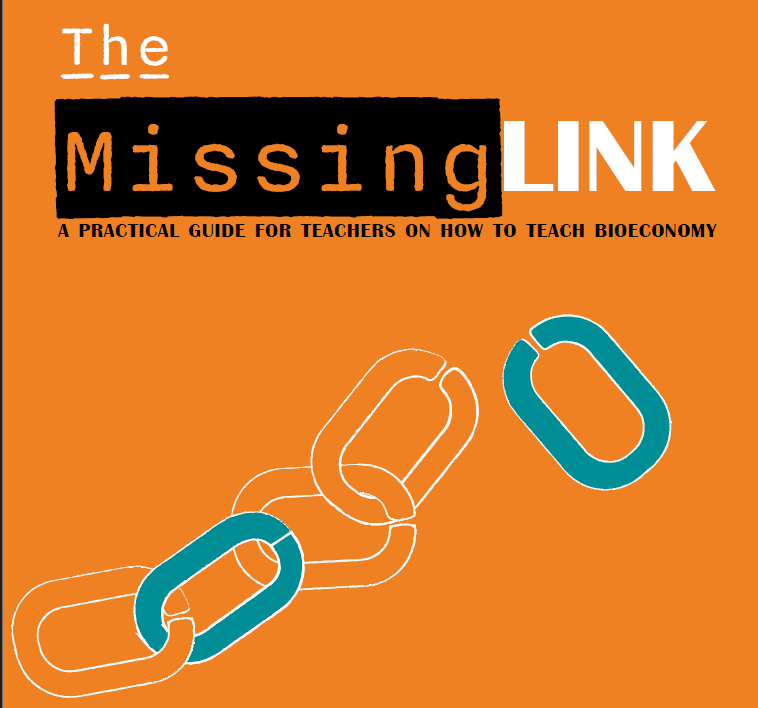
Table of Contents
What is it
The Missing Link – A Practical Guide for Teachers on How to Teach Bioeconomy is a flagship output of the BioBeo project, a Horizon Europe-funded initiative led by University College Dublin with the participation of Parents International and the Foundation for Environmental Education (FEE). The project is dedicated to transforming education by integrating innovative, science-based approaches to bioeconomy and circular economy teaching
Drawing on five core bioeconomy themes—interconnectedness, outdoor learning, forestry, life below water, and the food loop—the resource offers actionable strategies, comprehensive lesson plans, and practical tools that enable teachers to create engaging, future-focused learning environments.
Key Features and Content
- Fundamental Concepts:
The guide provides an in-depth explanation of what bioeconomy entails, detailing its pivotal role in addressing environmental challenges and promoting sustainable development. It clearly demonstrates how bioeconomy connects with circular economy practices, offering educators a robust foundation to introduce these ideas in a relatable manner. - Curriculum Integration:
Designed for seamless adoption, this resource outlines detailed strategies for embedding bioeconomy topics across a range of learning areas—including communication and language, mathematics, physical development, digital literacy, and financial literacy. Teachers will discover ready-to-use lesson plans, classroom activities, and project ideas that make the abstract concept of bioeconomy accessible and engaging. - Engagement Strategies:
Central to the guide is its emphasis on participatory learning. It offers practical checklists and step-by-step methodologies to enhance student involvement, while also providing innovative techniques for increasing parental and community engagement. By fostering active participation, educators can transform passive learning environments into dynamic, inclusive spaces that empower all stakeholders. - Planning and Implementation Tools:
To support effective execution, the guide includes comprehensive planning checklists, SMART(ER) goal-setting templates, and resource mapping techniques. These tools help teachers identify and overcome potential challenges—whether they be legislative, institutional, or logistical—ensuring that the integration of bioeconomy concepts is both practical and sustainable. - Collaboration and Advocacy:
Recognizing that successful educational innovation relies on a united school community, the guide offers strategies for engaging colleagues, building trust, and advocating for bioeconomy initiatives. It explains how to cultivate a collaborative network among teachers, administrators, and local experts, enabling a cohesive approach to curriculum reform and sustainable learning practices. - Assessment and Evaluation:
The resource outlines forward-thinking methods for assessing student learning and evaluating the overall impact of bioeconomy initiatives. With a blend of formative and summative assessments—as well as reflective tools like the StarFish diagram—teachers are provided with diverse techniques to monitor progress and refine their teaching practices continuously.
Why Choose The Missing Link?
This guide is not merely a curriculum supplement—it is a transformative tool that empowers teachers to drive meaningful change in education. Whether you are seeking to refresh your lesson plans, build community engagement, or influence educational policy, The Missing Link – A Practical Guide for Teachers on How to Teach Bioeconomy offers the expertise and practical solutions required to create a resilient, eco-conscious learning environment. Embrace this innovative resource and join a network of forward-thinking educators dedicated to shaping a sustainable future through bioeconomy education.